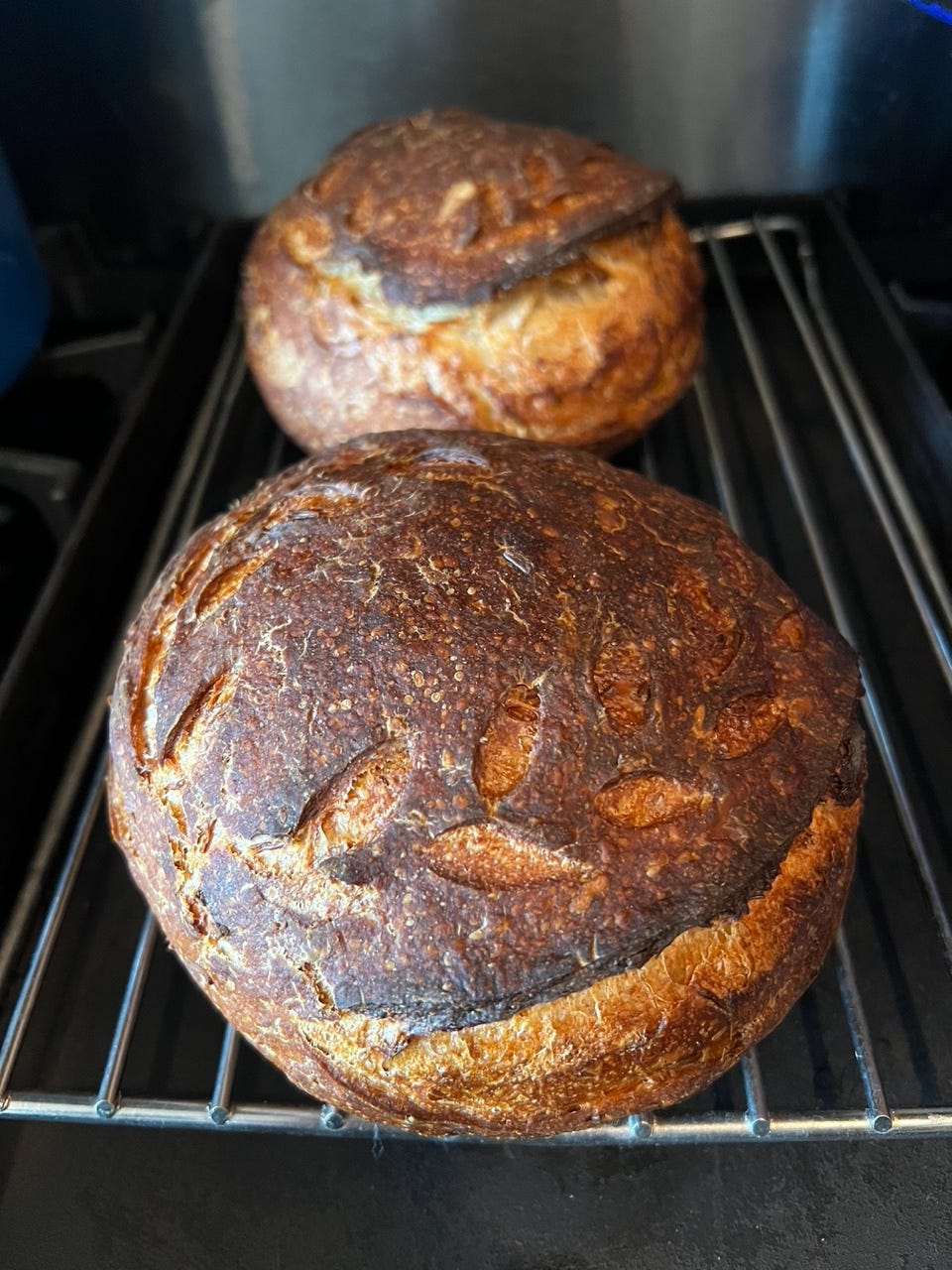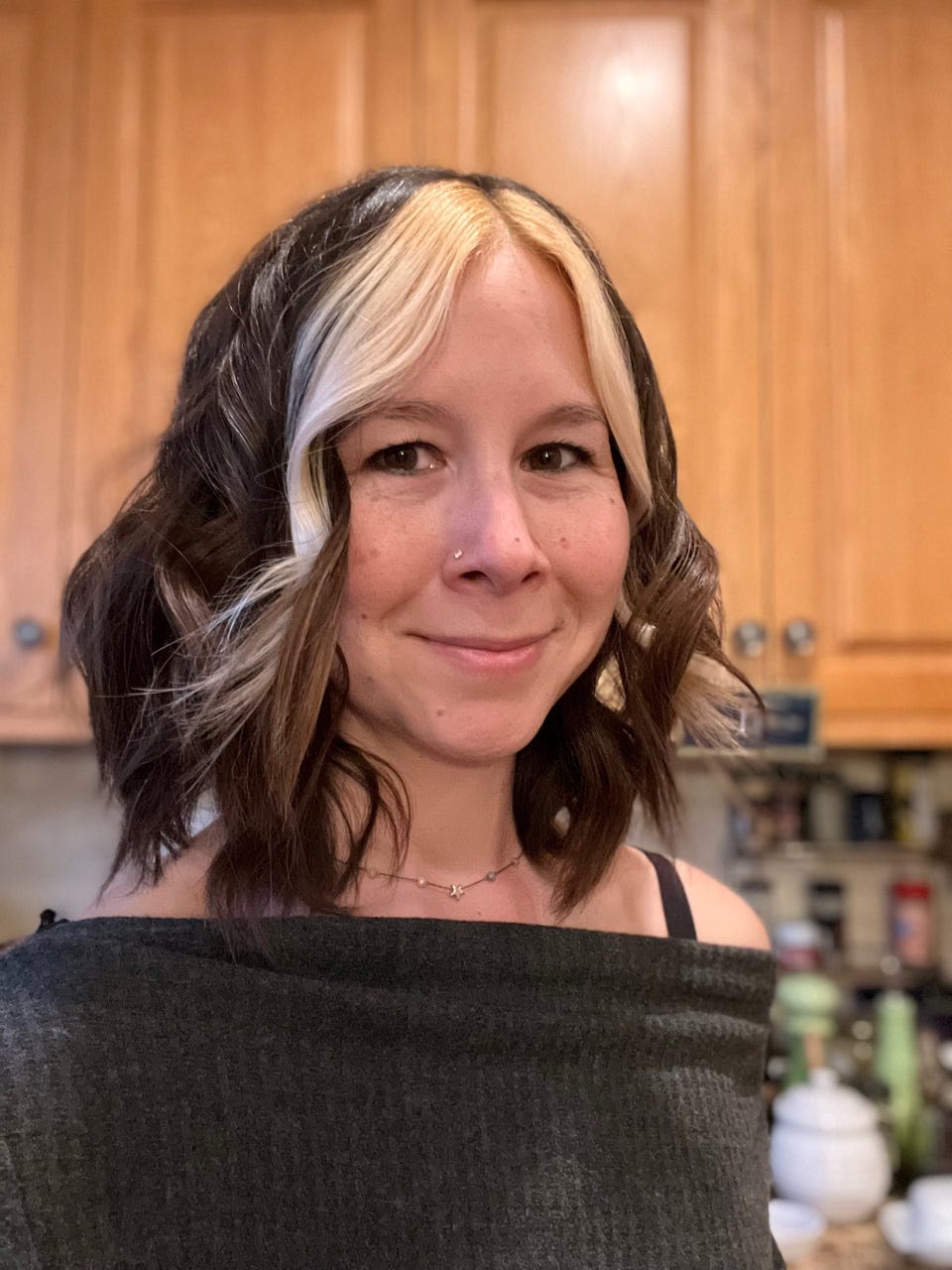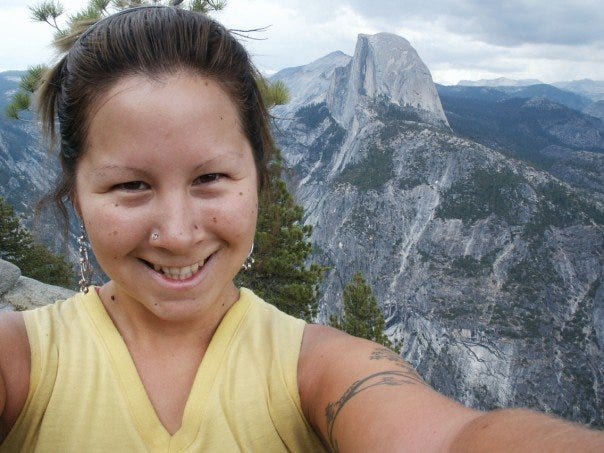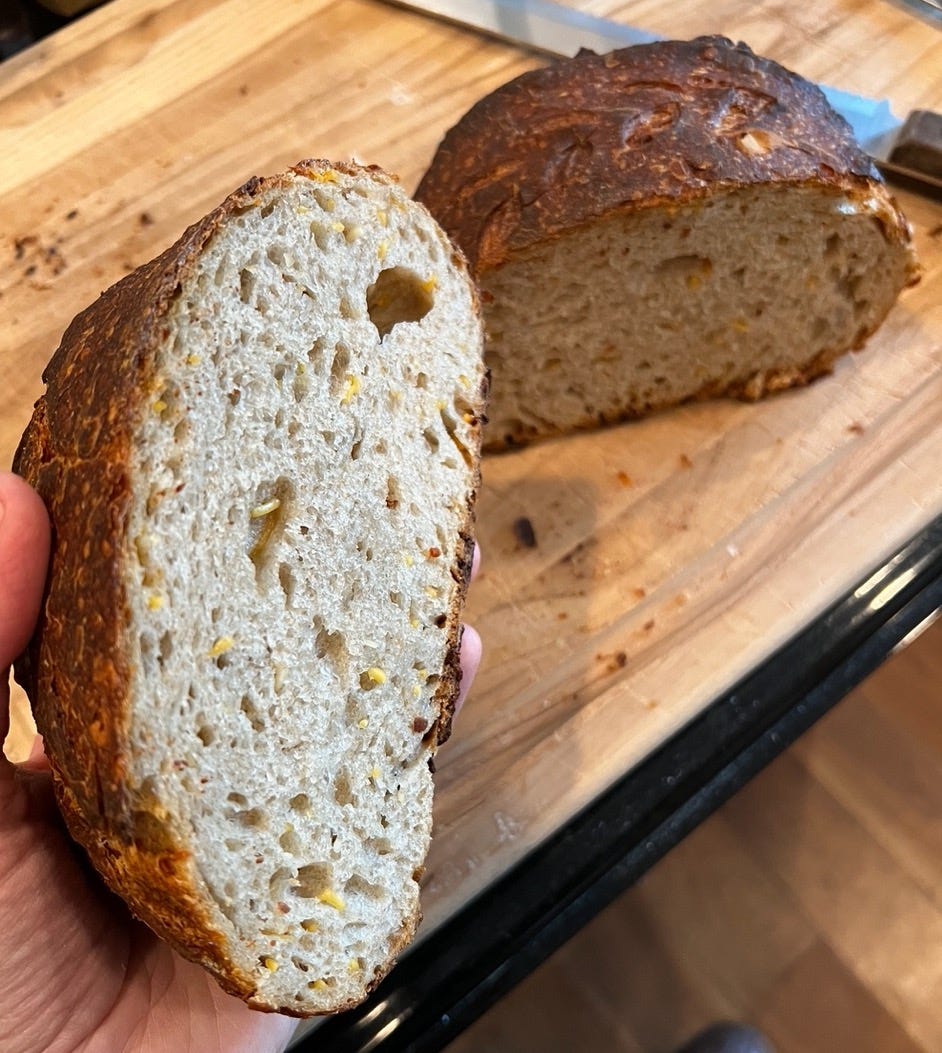Japanese Curry, Pandemic Baking, and Inspiration from LA’s Restaurant Scene
An interview with Keto Shimizu of La Cañada Flintridge
Hello, everyone (and welcome new subscribers)! I’ve been enjoying the few warm days this week—the Bay Area’s February faux summer—and all the plum blossoms and magnolia flowers it’s producing in my neighborhood. (Hopefully the fruit trees in my backyard won’t get too confused if we have a cold snap later in the spring.) This week, we’re returning to our regular format with an interview with home cook Keto Shimizu. Keto is a screenwriter, showrunner, baker, and mom in the Los Angeles area. You may know her work on Legends of Tomorrow, Arrow, and other shows. I know Keto through her older sister, Karen Shimizu, and I was sad to note the recent anniversary of the passing of their father, the noted art historian Yoshiaki Shimizu.
Keto and I talked about how she learned to cook, how the restaurants in the LA area have inspired her home cooking, and how she learned to love baking sourdough breads early in the pandemic—and then turned that fad into a long-term cornerstone of her home cooking. She also shared a recipe for a whole wheat cheddar loaf, which I’ve included below the interview, and the lentil soup she likes to make with it, which I’ll share next week. Here is what Keto told me, edited a bit for clarity.
Keto Shimizu
I grew up in both New Jersey and Vermont. When I lived in New Jersey, I had a lot of different kinds of food on the table. There would at times be home-cooked Japanese food—so, a lot of rice and curries and miso soups and, you know, noodles. My dad, who was from Japan, did a little cooking, but my mom, who is not, would actually also cook the Japanese stuff. She had lived in Japan and studied in Japan and loved Japanese food. So, on the rare occasion that my dad did make dinner, it would be something Japanese, and my mom would also cook soups and curries and rice and things like that for us. On very special occasions, she would make us pickle sushi rolls. And then, on the other hand, she would make more classic American dishes, including casseroles and pasta and stews. Shepherd's pie was a big favorite of hers and ours.
I started learning how to cook very basic things like pasta and spaghetti sauce, shepherd’s pie, stir fries, knowing the right ratios for making good rice, things like that, when I was pretty young—when I was like nine—and I was still in New Jersey. Later on, when we moved to Vermont, I started doing a lot of the cooking because my mom was really busy working and my stepdad was also really busy working. And I would come home from school, and they would both be working, and I would just be like, Okay, well, someone's got to make dinner for me and my little brother and the grownups in the house. So, I started cooking dinners pretty often. And that was where I really got my culinary chops, so to speak.
When I was in Vermont, we really did not have access to a lot of ethnic foods. Cooking there was about staples and really great fresh produce and, obviously, more maple syrup than you could ever go through. And then a lot of nuts and fibrous things and roughage and all that stuff. That was what was in our household. If I ever wanted to get any kind of Asian ingredient, I would often have to ask my father to send me some from New Jersey. So, we would get care packages with those special ingredients or those special snacks.
Then, when I moved to Boston for college, I found an amazing Asian grocer—not really close to where I went to school, but close enough that I could get my favorite kinds of hot sauces and dipping sauces and rice toppings and things like that. Those were great because I was dirt poor and needed to feed myself and knowing that there was a way to make rice taste really good, really easily in my cabinet made meals easier.
Also, my school was right near Chinatown, and there were all these wonderful cafes and little lunch spots where I could get really cheap Vietnamese sandwiches or bowls of Vietnamese bun. I had never cooked these things myself, but it was really inspiring to be able to eat them and then recognize the ingredients in local Asian grocery stores and be like, Oh, that's where that comes from. So, that was kind of an education.
Then I came out to LA, and Asian food was everywhere. I could find these special ingredients in Ralphs, or it wouldn't take me long to go find a Japanese grocery store and get really specialized things that I hadn't eaten since my trip to Japan. And that was really special.
I came to Los Angeles for the film industry. I had decided at age 15 that I wanted to write and direct movies. So, I went to film school at Emerson, and Emerson has a really great transition program in LA to go from being film students to being employed by the film industry. I did that program—did an internship—which led to my first job, and I was able to get an apartment and stay in Los Angeles upon my graduation. I’ve been here since 2007 and have been, for the most part, gainfully employed.
My husband, Chris grew up in New Orleans and then, kind of like me, had sort of like a split-location childhood. He was in New Orleans for the beginning part of his life, and then he moved to Oklahoma, to Tulsa, where he went to middle school, high school, and then college. Then he went to business school in Atlanta, at Emory, and he spent some New York and spent some time in Chicago and ultimately decided to join the film industry and came out to the LA area.
I do most of the cooking in our house now. Chris will occasionally do some cooking. These days he's been grilling a lot. He's been really nerding out about the best ways to slow cook and grill all different kinds of meats. But I don't eat a lot of meat, so he'll usually make like a big pork shoulder or something and then he will eat it for like a week. I will, of course, have some, but I don't eat a lot of it. And my kids don't eat it yet; they're still too small, and their palates have not quite acclimated to real grilled meat. We also invite neighbors and friends to come over and partake.
Pre-kids, I feel like I had a lot more time and energy to be much more creative about the foods that I cooked for myself and Chris, and I would look at more recipes and try things out and experiment. I was doing some Japanese stuff for myself, but my culinary exploits back then were much more varied. There were nights where I just wanted something really comforting, and I would, you know make Japanese kare, or I would make miso soup with rice or something like soba—my favorite food is cold soba noodles. And I really loved cooking Italian food, so I would make a really rich pasta sauce or do some amazing sort of seared, baked chicken thing with tons of garlic and pesto and stuff like that. Or sort of experiment with some French techniques.
I think a lot what inspired me in LA was the access to good restaurants, which inspired me to try cooking things I really wanted to eat at home. When I tried burrata for the first time, for instance, it totally blew my mind. I went to this Italian restaurant and got burrata, and I'd never had it before, and I was like, This is the most delicious thing I've ever had. Then, I discovered that I could get it at the local supermarket, or I could get a really good round of it at a farmer's market. So, I’m like, Oh my gosh. I need to create like a balsamic glaze to go on it, and we can get some fresh fruit to go in the salad.
For a while the way I would get excited about new dishes was trying them in restaurants and then being like, Okay, let's recreate this. Particularly desserts. I’d get really excited about recreating desserts that Chris and I had had at restaurants. There was a cheesecake that was like a s’mores cheesecake: it had a graham cracker crust and a chocolate center, and then it had a dollop of melted marshmallow on top. It was one of the most incredible desserts I'd ever had. So, I found a pretty solid chocolate cheesecake recipe, found a good crust recipe, and then experimented with different kinds of marshmallows. I ended up putting fluff on top and then toasting the fluff with a scorcher. That worked perfectly.
These days, because I essentially have to make two dinners every night, I have made things very simple. I will make the little kids’ meals, which is often some sort of carbohydrate—be it fresh bread or some pasta or pizza or mac and cheese, something like that—and then fruit and avocado or some sort of green thing. My elder son is much more amenable to eating things like that than my youngest, who is incredibly, horribly, horribly picky as an eater. And then, you know, they love chicken nuggets and things like that. They have a very little-toddler palates.
So, I always make them something, and then on top of that, I'll usually make Chris and I like a salad with some sort of protein on it, usually chicken. And then, when I make bread, I will have bread for everybody, and they'll all eat it.
I think I'll be an adventurous cook again. I just don't have time for it.
Baking bread started during the pandemic. Before kids, I would make a lot of quick breads; I would do biscuits, or I would make cornbread or dinner rolls, things like that, to go with whatever dish I had made for us. So, baking has been something I've always liked to do. And I've always loved baking desserts, so I'd make cheesecakes and regular layer cakes (not as much because they’re so much work) or cupcakes or cookies. But during the pandemic, you know, seeing everybody nerding out about sourdough bread, and knowing how much I love sourdough bread, and having always been kind of intimidated by the prospect of actually making it, I finally caved and got some starter from a baker friend—and promptly let it sit in the fridge for like six months, not doing anything with it because I was still intimidated by the whole prospect of feeding it and then having to immediately bake with it. I just wasn't ready for it. Finally, I was like, Okay, I need to do something with it.
I was certain I had killed it. I texted my friend was like, “Hey, um, six months later, I haven't touched this starter. Do you think it's dead?” And she said, “Look take it out, put it on the counter. Give it 50 grams of flour, 50 grams of water, see what happens.” And, so, I did, and lo and behold, the thing came back to life. It had just been hanging out in my fridge and hibernating. And suddenly, there it was, bubbling away.
So, I quickly asked my brother-in-law, who had been doing some really beautiful sourdough loaves, if he had a recipe that he could recommend for someone who hasn’t really done it. And he sent me one, and I tried it and it came out okay; it was a little messy, but it was a start. I was like, Okay, okay, I can kind of do this.
I then got myself a book by the woman who had made the recipe that my brother-in-law sent me: this book called Artisan Sourdough Made Simple by Emilie Raffa. Her book is so user-friendly, and it broke down all the stages of sourdough and had these great recipes that were pretty simple and pretty easy to follow but still offered the chance to experiment with different flours and mix-ins. I just started baking loaf after loaf after loaf and kept my starter fed and happy. And the more I baked, the more intuitive it all became.
Then I started to experiment with different flours and my own mix-ins and experiment with ratios of flour to water and different kinds of flour and started coming up with kind of my signature loaves. And in the meantime, I was making so much bread that we couldn't go through it all. So, I was started giving it out to friends and neighbors—that offered more encouragement. And I tried new scoring techniques, which was something I had been sort of intimidated by, and I kind of got that going, too. It’s been a real journey, but it's great because my youngest, the really picky eater loves, loves my bread. And that makes me happy, because even though he won't eat most of what I offer him, he will gobble up the bread. That makes me very happy.
For a while was I was buying these small bags of different kinds of artisan flours and just figuring out what they tasted like and how much could I put in in a combination with the high-gluten flour. And I discovered that I really loved this grain called einkorn, which is really flavorful, it's high protein‑it's just so yummy. So, I went and ordered a 25-pound bag of it. And that was a mistake. That was just too much einkorn, because I only could really use, like, 150 grams or something of it, of a 600-gram total dry mixture. And that meant that it lasted and lasted and lasted and lasted. I had this bag for like a year. Thankfully, I had a really good place to store it, so it didn't go bad, but I just had to keep making einkorn loaves. So, I got really good at making these einkorn loaves that were almost a third einkorn. Sometimes I would experiment and be like, Ooh, can I put 200 grams of the 600? And it would be a little harder to build up the body of it, but I got a decent loaf that way.
That kind of became a signature loaf just by default because I was making them all the time. The other one that I really like to do that I don't see many other places is putting cheddar cheese in the loaf. So, what I did for a while is I would do sort of this whole wheat and bread flour mix and then fold in a bunch of cheddar cheese while I was doing the stretch-and-folds, and oh my gosh, when those things go in the oven, the house smells like heaven. And it's the perfect loaf to have with soup because it's like you've got your cheesiness and your crusty bread all in one bite with whatever sort of stew you're making. So that's really good. And I really like giving that one to my kids, because then they're also getting a little extra protein.
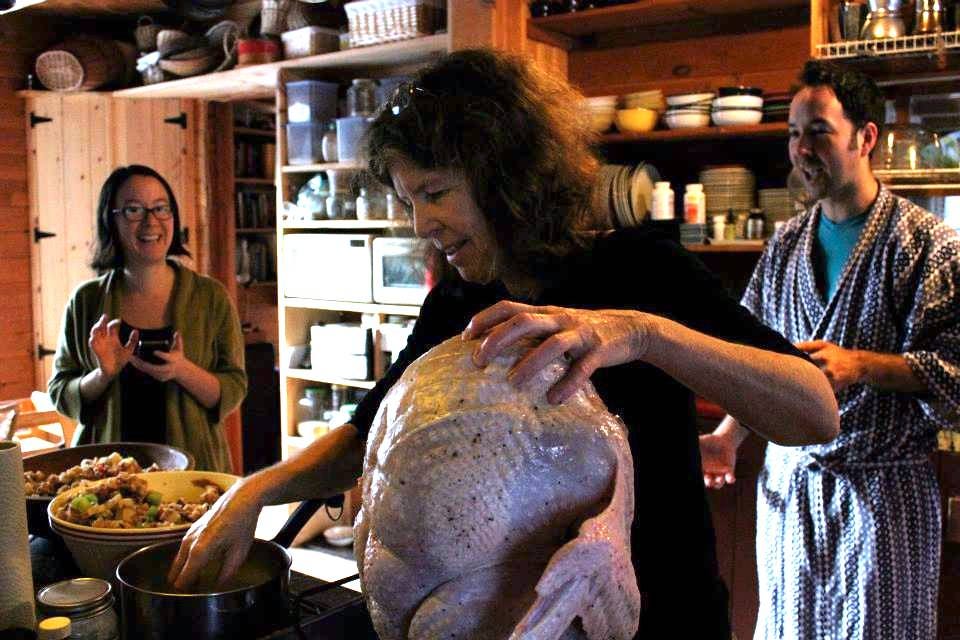
I make a lentil soup that I love having with that. I make it in my Instant Pot, and it's really easy and always comes out great, and it pairs really nicely with the cheddar loaf. When I was a kid, my stepdad, Larry, made a lot of hippie food, and my mom did a lot of soups, and I think they kind of overdid it on lentils. I sort of had to rediscover lentils on my own and be like, Actually, this makes a really good soup if you've got this kind of broth and these, these tomatoes, and these spices in it.
Cheddar Whole Wheat Sourdough
Makes two petite rounds
Flour mixture:
200 grams whole wheat flour
400 grams bread flour
11 grams salt
Wet mixture:
60 grams active, bubbly starter
450 grams lukewarm water
20 grams honey
Mix-In:
1 cup finely shredded cheddar cheese
Whisk the flours and salt together; set aside.
Mix the starter, water, and honey together until they are a uniform mass. Add in the flour mixture and mix until a shaggy dough forms. Let the dough sit in a large bowl covered with a damp cloth for 40 minutes to 1 hour.
Fold in the cheese: sprinkle ¼ of the cheese on top of the dough. Stretch one corner of the dough and fold it over on top of the rest of the dough, then sprinkle more cheese onto the exposed dough. Continue stretching and folding the dough, sprinkling cheese on the exposed dough, until all the cheese has been incorporated and the dough has a nice, round, bouncy consistency.
Cover the dough with a damp cloth and prove it for 1 hour in a warm place.
Stretch and fold the dough again, about 4 times, until you feel it tightening again. Cover the dough again and prove it another hour.
Stretch and fold a third time, as before. Cover the dough and prove it until it has doubled in its original size (another 2-4 hours).
Slice the dough into two equal portions, and shape each into a round boule. Place the shaped rounds into bowls lined with parchment paper, right side up. Place the rounds into the refrigerator for up to 24 hours, (or, if baking that same day, skip straight to preheating the oven).
Preheat your oven to 500°F with two Dutch ovens inside.
When your oven and Dutch ovens are fully heated, remove your boules from the fridge.
Take out one Dutch oven, score your loaf with a razor or a very sharp knife, and carefully place the boule and parchment paper into the Dutch oven. Cover the Dutch oven with its lid, and place it into oven. Repeat with other loaf.
Reduce the heat to 450°F. Bake the bread for 35 minutes, then remove the Dutch oven’s lids and bake the loaves for an additional 10 minutes.
Remove the loaves from the Dutch ovens and finish baking them directly on the oven grates for a final 8 minutes.
Let the boules cool on a cooling rack for at least 1 hour before slicing.
More California Stories to Read, Watch, and Listen To
I’ve recently started following a couple new sources for California food news. The first is one I’m super excited about: Paola Briseño-González’s new recipe-focused newsletter Fresca. I can’t wait to try this week’s recipe, a Salsa Macha Shrimp Scampi. There’s also a new restaurant review blog out of LA, How to Eat LA, which looks like it will be a good resource.
In other food news, KQED had a great little piece about a food truck bringing indigenous Mexican flavors to San Jose (road trip!); on Forum, Soleil Ho talks about her decision to step down as the SF Chronicle’s food critic; the LA Times has a fun article about the enduring appeal of Cuban bakery Porto’s.
Photos courtesy of Keto Shimizu




